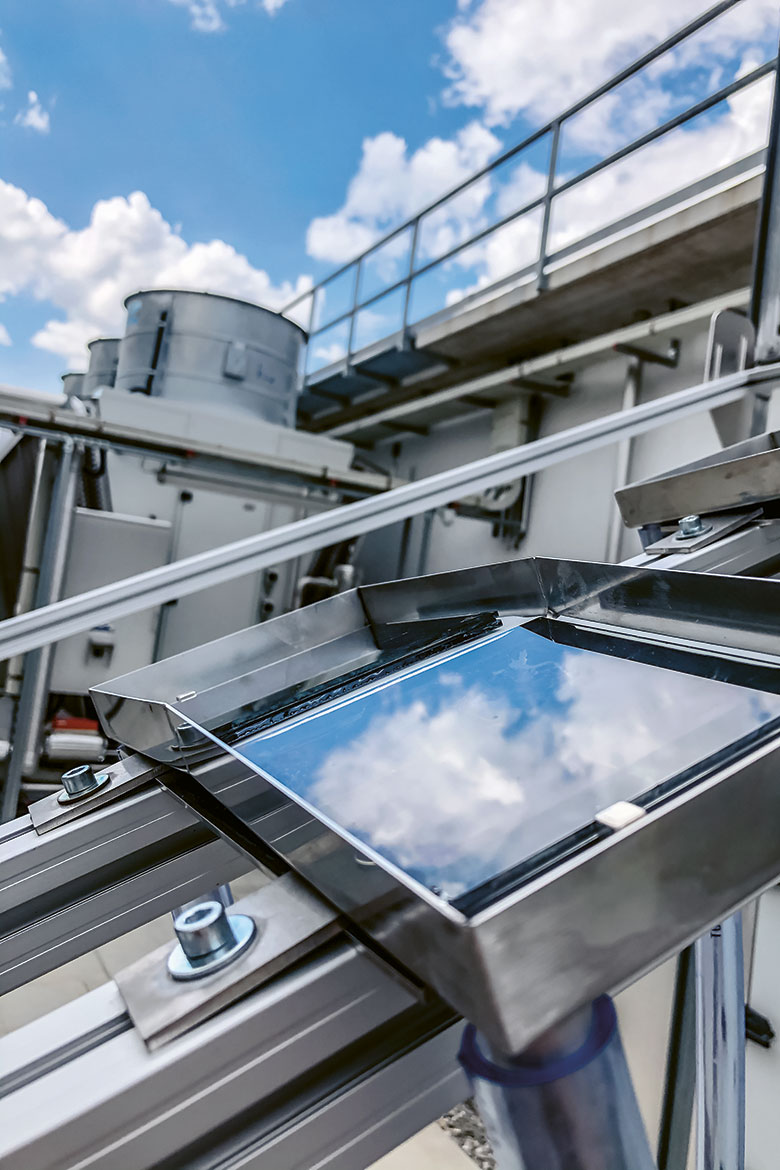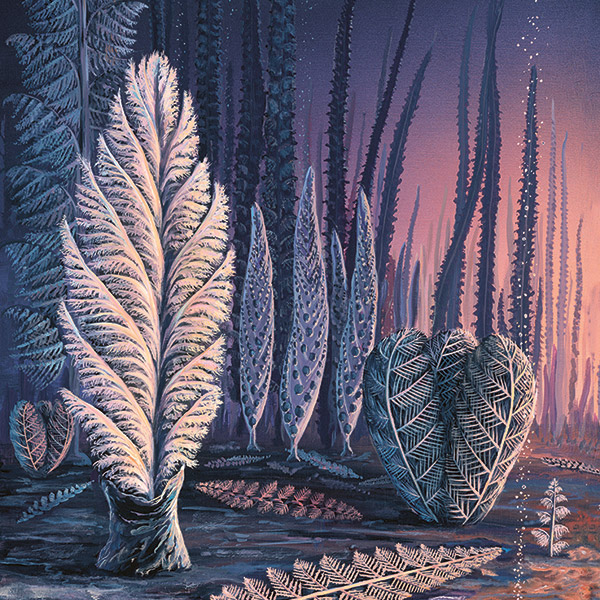PHOTOVOLTAICS
Heavy metal raindrops
If solar cells made of perovskite are going to become marketable, they mustn’t emit any pollutants. To this end, they are being subjected to adverse weather conditions in a test facility in Muttenz.

On a roof in Muttenz, an experiment is being carried out into whether perovskite solar cells are leaking lead into rainwater. | Image: zVg.
The future hopes of photovoltaics lie here on a surface three by four metres in size: solar cells made from the semiconductor perovskite, ranging from experimental world-record holders in the efficiency stakes to well-nigh manufacture-ready modules. Researchers at the University of Northwest Switzerland (FHNW) have installed a test facility on the roof of their institute in Muttenz near Basel to assess their environmental impact.
This facility is unique in the world. For the first-ever time, researchers are investigating the possible impact of perovskite solar energy plants under real-life weather conditions. The solar cells are here exposed to the elements from day to night: to wind, heat, rainstorms and hailstones. The more extreme the weather conditions, the better. “We want to look at worst-case scenarios”, says Markus Lenz, who is responsible for the test facility.
In recent years, the semiconductor perovskite has rapidly worked its way up to become a real competitor for silicon. “Researchers needed several decades to develop efficient silicon cells”, says Lenz. “It’s only taken a few years in the case of perovskite cells”. Perovskite comprises crystals that can process a lot of light even when they are present in wafer-thin layers – unlike silicon. And they can also use energy-richer green and blue light. The cells can be manufactured cheaply, and can even be printed on plastic film. This offers the promise of completely new applications – such as electricity-generating windows.
Well-packaged heavy metals
But this system has a possible weak spot. The cells incorporate a material without which even the most efficient perovskite cannot function: lead. There are only trace amounts of it in the thin layer of cells, but if it is not properly protected, lead can easily escape when the cells come into contact with water. When this happens, the cells cease producing electricity. This is why the engineers encase the perovskite cells in glass or plastic for practical applications. In Muttenz, the researchers are testing whether or not the lead can still escape from the cells under certain circumstances. To this end, they collect the run-off rainwater and measure the tiniest concentrations of heavy metals in it.
The facility has been running since May 2020. Initial evaluations have already been made. “Encapsulating the cells plays a decisive role in preventing environmental emissions”, says Markus Lenz. “Thus far, well-glued and well-packaged cells on a glass or plastic substrate have shown no emissions at all”. In contrast, cells in the laboratory that were only bonded at the edges with hot adhesive degraded after just one night. That was not surprising, because such cells are only utilised for basic research in the lab.
“Environmental stability is important”, says Sylvain Nicolay of the Photovoltaics Centre at the Swiss Centre for Electronics and Microtechnology (CSEM) in Neuchâtel. To be sure, many perovskite cells pass the standard, recognised degradation tests. But more work is necessary to identify possible material changes. When installed in the real world, such cells have to last between 25 and 30 years. If they are to be used in building façades, there must also be an assessment of how to manage the cells once their working life has come to an end. Lorenz says, “we have to develop concepts now for how to deal with them at the end of their lifespan, and how to recycle them afterwards”.
In parallel, the engineers are developing further new models for the market, also in collaboration with the European research association Perovskite Thin-film Photovoltaics (PERTPV), to which numerous Swiss research institutions belong, including CSEM. PERTPV wants to set new records, and, according to Nicolay, efficiency levels of almost 30 percent are feasible. This will mean developing modules with new technologies – so the facility on the roof will have its work cut out for some time to come.




